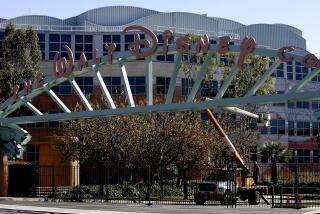Lockheed Orders Halt to Tactic in Proxy Fight : Aerospace: Top management says it wasn’t aware that its credit union was being used to distribute material siding with the current board.
- Share via
Lockheed Corp. said Thursday that it has ordered a halt to distribution through the company credit union of material siding with current Lockheed directors in their proxy struggle with a slate of rival board candidates.
The rivals, led by Texas financier Harold C. Simmons, had complained to the Securities and Exchange Commission about the use of the credit union in the proxy fight, according to sources who requested anonymity.
NL Industries, a Houston chemicals firm controlled by Simmons, owns 18.9% of Lockheed stock and has been seeking the votes of other Lockheed shareholders in the election to be held next Thursday at the company’s annual meeting.
Lockheed on Thursday publicly acknowledged that materials related to the board campaign were mailed March 5 to about 42,000 members of its credit union. The materials were prepared by middle-level Lockheed management “without the knowledge or approval of senior management,” Ron Meder, a Lockheed spokesman, said.
The materials became controversial at Lockheed because employees also own nearly 19% of Lockheed stock through an employee stock ownership plan and could sway the board election. To ensure a secret ballot, ESOP members are to give their ballots--known as proxies--to an ESOP trustee who will not disclose their identities. All other shareholders are to submit their proxies to the two agents representing the respective factions.
Lockheed and the Simmons camp are required to provide the ESOP trustee with advance copies of any official campaign material to protect employees from undue pressure and improper claims.
However, the ESOP trustee did not get an advance copy of the campaign flyer in the credit union envelope because Lockheed’s senior management was not initially aware of the mailing, Meder said.
“Harold Simmons . . . made his fortune through hostile takeovers,” the statement said. “After raiding companies, he is known to have sold off assets for quick profit. . . . It is not known if he (Simmons) would break up Lockheed. . . . Your job could be impacted if Simmons gains control of the corporation.”
Meder said Lockheed’s senior management learned of the mailing March 7 and took measures to prevent any future use of the credit union for messages involving the proxy fight. Meder said the SEC made an inquiry to Lockheed after the company had resolved the matter.
Campaign tactics and the ESOP vote were discussed by Simmons and NL Industries President J. Landis Martin at a press conference Thursday in Burbank.
Martin said Lockheed has presented its employees with the current board’s position on issues but had denied NL Industries a common forum for addressing ESOP members.
Responding to Martin’s request, Lockheed Chairman Daniel M. Tellep said Thursday that he will allow the Simmons camp to present to employees a 12-minute videotape explaining its position. Tellep said he has already presented Lockheed employees with a 12-minute tape presenting the current board’s positions. “I don’t think we’ve been unfair (on) access to employees,” Tellep said.
In other developments, Simmons--in comments after the news conference--said he would try to produce $1 billion in revenue from Lockheed’s electronic systems and technology services divisions by either selling some operations or by increasing their profit levels. There are about $2 billion in assets in the divisions, he said.
Simmons earlier had claimed that diversification within the two divisions had weakened the company. He has also said before that he will sell some units if he cannot improve their profitability.
In another development Thursday, Standard & Poor’s Corp., a major bond-rating service, said a victory by the Simmons slate would prompt a rating review that could lead to a downgrading of Lockheed bonds. S&P; indicated that a Simmons victory would create some uncertainty about Lockheed’s future financial policies.
More to Read
Inside the business of entertainment
The Wide Shot brings you news, analysis and insights on everything from streaming wars to production — and what it all means for the future.
You may occasionally receive promotional content from the Los Angeles Times.










